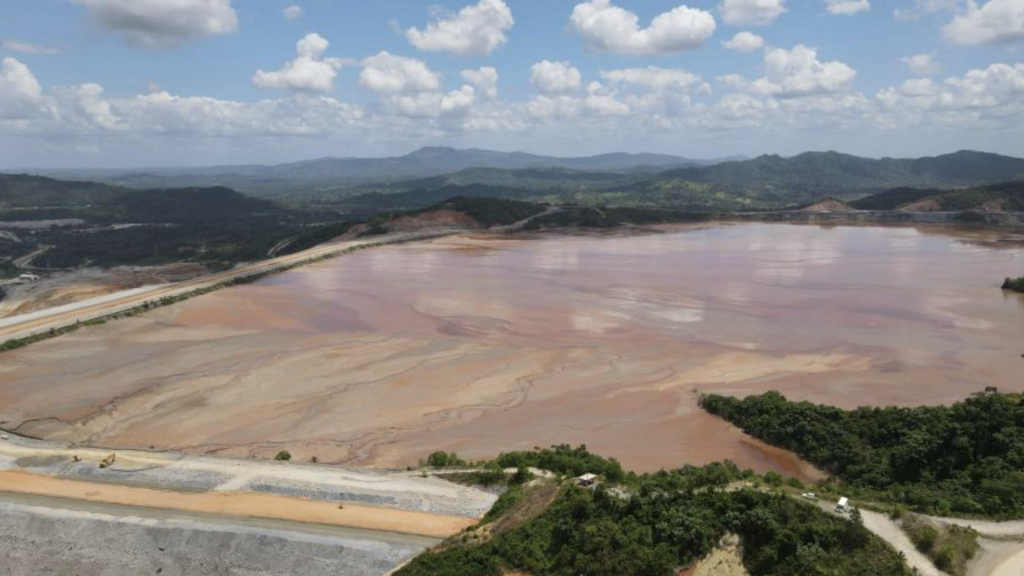
In South America, Brazil and Chile have banned the construction of upstream dams due to their inherent risks, yet the demand for minerals continues to drive the need for tailings storage facilities.
In the Dominican Republic, the leading gold mining venture, Barrick seeks to build a second tailings dam and while this has been cleared by the Abinader administration the implementation is meeting with community rejection. Barrick has not announced it will implement alternative technologies for tailings management, such as dry stacking or dewatering, to reduce risks.
The very real risks of environmental, health and life risks of the current tailings dam in the province of Sanchez Ramirez are high up in the concerns of community activists. Communities in other provinces categorically have rejected the installation of a tailings dam, leading the mining company to decide to build a second tailings dam in the same province.
Around the world, the potential for dam failures and the environmental and social impacts of mining operations are driving increased scrutiny and calls for safer tailings management practices, including efforts to develop global standards and increased investor engagement with mining companies. Once a tailings dam is built, it becomes a legacy site where the responsibility for management and potential risks may not be clear.
Earthworks, an organization that monitors tailings dams around the world, highlights that a substantial portion of the world’s tailings dams are deemed to be at high risk of causing catastrophic damage if they fail. The tailings dam in the Dominican Republic is not the exception.
Meanwhile, regarding the Dominican Republic, Earthworks reports that Barrick Gold’s Annual General Shareholder Meeting (AGM) was held virtual again this year. After last year’s AGM, the company announced it would “continue to host virtual-only annual general meetings despite calls for public companies to return to an in-person format.”
Despite this decision, in the Dominican Republic, the Comité Nuevo Renacer – representing 450 families living downstream of the Pueblo Viejo mine and the El Llagal tailings storage facility – wants to remind Barrick and its shareholders that their fight for relocation continues.
In 2023, the Comité joined a Global Week of Action, demanding that the government stop Pueblo Viejo’s expansion project and relocate impacted communities. In 2024, the Comité repeated these demands in a video playing on a mobile billboard parked outside Barrick’s Toronto headquarters during the AGM.
Earthworks reports that now, in 2025, the Comité believes its relocation request has reached a new level of urgency. They report learning from Barrick employees that the company will increase the height of its El Llagal’s tailings dam by another 14 meters. The dam, which holds back mine waste, is already over 135.5 meters tall and stores 100.1 Mm³ of tailings as of June 2023. The company projects the dam will eventually reach a height of 152 meters. Google Maps shows that some houses lie within 500 meters of the foot of the dam.
The Comité has also raised serious concerns about Barrick’s plans to build a second tailings storage facility, “El Naranjo,” to be located six kilometers southeast of the plant and close to the existing El Llagal dam. According to Dr. Steven Emerman’s 2023 independent review of Barrick’s environmental impact study for the proposed expansion El Naranjo would be “one of the largest earth-core rockfill dams in the world,” standing at 157 meters. Barrick disputed parts of Dr. Emerman’s analysis, but not the characterization of the size of the dam. Barrick’s own documents indicate that expected consequences of a dam failure at both El Llagal and El Naranjo have been rated as “extreme,” meaning that more than 100 fatalities could be “expected in the event of dam failure.”
Given the possibility of extreme consequences in both cases should the dams experience a failure, the Comité has been supporting six communities at risk of being displaced by the proposed El Naranjo tailings dam. These communities allege they have not reached an agreement with Barrick regarding adequate relocation and fair crop compensation.
While negotiations continue, as of April 2025, community members are actively trying to prevent Barrick employees – accompanied by soldiers – from cutting down trees at the headwaters of the El Naranjo River, a vital part of the local ecosystem. Listin Diario reports that “[t]he residents of the area have formed a common front against the indiscriminate logging which, they argue, not only endangers their environment but also their livelihoods.” As further reported by Listin Diario, Barrick’s environmental department, however, maintains that the tree removal is part of a road construction project on its private land so that “cars can pass over the stream, without affecting the water quality.”
As reported in Earthworks, while Barrick Gold meets its shareholders virtually, the Comité and the many communities it represents and supports are mobilizing outside Barrick’s office in Santo Domingo. They are raising their voices in defense of water, opposing the road construction tied to the expansion, and fighting to protect the Naranjo River. They reiterate to Barrick Gold and its shareholders that they do not want to be part of the “more than 100 fatalities” predicted in the event of a dam failure. They are urgently calling for relocation before tragedy strikes.
Read more:
Diario Libre
Diario Libre
Earthworks
Earthworks
Earthworks
Tailings dams
21 May 2025

